Are you looking for a homeopathic cure for Kidney disease? This article discusses the homeopathy treatment of 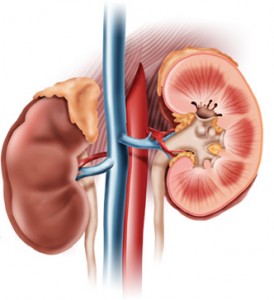 Kidney disease along with the best homeopathic medicine for Kidney disease treatment.
Kidney disease along with the best homeopathic medicine for Kidney disease treatment.
Kidney disease are the group of disease that affect the whole urinary system including kidney ureter bladder urethra etc.
Kidneys are near the middle of your back, just below the rib cage. Inside each kidney there are about a million tiny structures called nephrons. They filter your blood. They remove wastes and extra water, which become urine. The urine flows through tubes called ureters. It goes to your bladder, which stores the urine until you go to the bathroom.
Common kidney disease
Urinary tract infection
Urinary tract infection is a bacterial infection that affects the urinary system which includes kidneys, ureters, the bladder, urethra, sphincter muscles and prostate gland. The infection is generally caused by bacteria E. coli.
Urinary infection mainly characterized by painful micturation, frequent desire for urination, cloudy urine, haematuria (blood in urine), back and abdominal pain etc.
Population like older adults and people with a history kidney disease, kidney stones or illness like diabetes, AIDS are more prone to infection.
Urine is normally sterile, but it becomes infected when bacterial growth occurs. UTI implies multiplication of organisms in the urinary tract and is defined by the presence of more than hundred thousand organisms per ml in a freshly void midstream sample of urine. Most of urinary tract infections are not serious, but are painful. It involves kidney, ureters, bladder or urethra. UTI is common infection affects women more then men.
There is an increased in the rate of UTI during puberty, related in part to the onset of sexual activity and pregnancy. This problem affects primarily adolescent females; adolescent males have very low rates of infection. The diagnosis in women is further complicated because the symptoms of Urinary tract infection can be similar to those of vaginitis or a sexually transmitted infection.
Urinary tract infection refers to presence of microorganism in the urinary tract, causing a host response. It should be differentiated from colonization though colonization precedes infection. Transient introduction of bacteria in to the urinary tract probably occurs in the healthy, especially sexually active women.
Urinary tract infection may present as asymptomatic bacteriuria, urethritis, cystitis or acute pyelonephritis in women. In men, they often present as acute prostatitis, chronic prostatitis and pyelonephritis.
Urinary tract infection may be classified as complicated or uncomplicated. A UTI is described as uncomplicated when it occurs without presence of physiologic or anatomical abnormalities, not due to instrumentation and is community acquired. An infections is labeled complicated when there are structural or functional abnormalities present in the urogenital tract.
Kidney stones
Kidney stones, also called renal calculi, are solid concretions (crystal aggregations) of dissolved minerals in urine; calculi typically form inside the kidneys or bladder.
Nephrolethiasis refers to renal stone disease; urolithiasis refers to the presence of stones in the urinary system.
The majority of stones consist of calcium, usually as calcium oxalate, but they can contain uric acid, and struvite (magnesium, ammonium, and phosphate).
Glomerulonephritis
A group of disorders that cause inflammation of the glomeruli (Glomerulonephritis). These are filtering units in the kidneys that help filter out waste products and water and salt from the blood. Over time, the inflammation can lead to loss of kidney function.
It may present with isolated hematuria and/or proteinuria (blood resp. protein in the urine); or as a nephrotic syndrome, a nephritic syndrome, acute renal failure, or chronic renal failure. They are categorised into several different pathological patterns, which are broadly grouped into non-proliferative or proliferative types. Diagnosing the pattern of GN is important because the outcome and treatment differs in different types.
Homeopathy medicine for Kidney disease
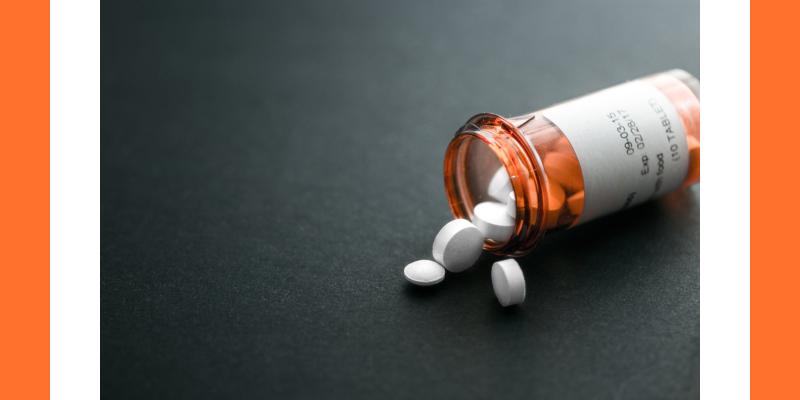
Homeopathy is one of the most popular holistic systems of medicine. The selection of homeopathic medicine for Kidney disease is based upon the theory of individualization and symptoms similarity by using holistic approach.
This is the only way through which a state of complete health can be regained by removing all the sign and symptoms from which the patient is suffering.
The aim of homeopathy is not only to treat Kidney disease but to address its underlying cause and individual susceptibility.
As far as therapeutic medication is concerned, several homeopathy remedies are available for Kidney disease treatment are there, which can be selected on the basis of cause, sensations and modalities of the complaints.
For individualized remedy selection and treatment, the patient should consult a qualified homeopathic doctor in person. Following remedies are commonly helpful in the treatment of Kidney disease:
#Arsenicum. [Ars]
This homeopathic medicine for kidney disease corresponds to all stages of Bright’s disease, bearing a closer resemblance than any other remedy. It comes in later in the disease where there is dropsy, pale skin, waxen appearance, watery diarrhoea and great thirst. The urine is dark, casts are abdundant, and it contains much albumen. There are attacks of dyspnoea when lying down in the evening and after midnight, relieved by an expectoration of mucus. It may come in immediately after Aconite in many cases. Dr. Pope found Arsenicum 3X efficient in acute nephritis. ” Blood boils ” make a special indication for this remedy. Baehr, Millard and Hale question the usefulness of Arsenicum in kidney affections. However, it seems a simile to the large white kidney; in fact, one could hardly wish for a closer correspondence. Hughes considers it a favorite with anxiety and sinking of vital forces will call for Arsenicum. Calcarea arsenica has been used in the anaemia, progressive emaciation and debility of this disease with success.
#Apis mellifica. [Apis]
Apis is not so much a remedy for chronic Bright’s disease as for the acuter forms. There are oedematous swellings of the face and extremities, paleness, ascites, oedema pulmonum, pains in the head, back and limbs. Albuminuria following scarlatina. It may be of use in any form of Bright’s disease when there are dull pains in the kidneys, scanty urine and frequent Micturition. The urine is heavily charged with albumen and contains blood corpuscles. The oedema appears quickly, there is general dropsy and suppression of urine and perhaps an eruption of the skin like a nettle rash. The patient is drowsy , apathetic and has a bruised feeling all over. Apis in such cases acts best in trituration; do not depend on the tincture or dilutions. Hepar is recommended by Kafka in Bright’s disease following scarlatina. A valuable symptom for Apis is the following of suffocation. He does not see how he is get another breath.
the face and extremities, paleness, ascites, oedema pulmonum, pains in the head, back and limbs. Albuminuria following scarlatina. It may be of use in any form of Bright’s disease when there are dull pains in the kidneys, scanty urine and frequent Micturition. The urine is heavily charged with albumen and contains blood corpuscles. The oedema appears quickly, there is general dropsy and suppression of urine and perhaps an eruption of the skin like a nettle rash. The patient is drowsy , apathetic and has a bruised feeling all over. Apis in such cases acts best in trituration; do not depend on the tincture or dilutions. Hepar is recommended by Kafka in Bright’s disease following scarlatina. A valuable symptom for Apis is the following of suffocation. He does not see how he is get another breath.
#Mercurius corrosivus. [Merc]
This homeopathic medicine for kidney disease corresponds to the large white kidney. There is an albuminous, scanty and red urine; pale waxen color of the body; there are lumbar pains, great dyspnoea and excessive strangury. It takes the first rank among all the mercurials for nephritis, and it comes in the later stages. Syphilitic complication further indicate it. There is an expression of uneasiness of uneasiness on the face. Dr. Ludlam considers it our best remedy for the albuminous nephritis of pregnancy and Baehr lauds it in suppurative nephritis. Kali chloricum. This remedy is said to be the most homoeopathic of all remedies in Bright’s disease. It has scanty, dark, albuminous urine containing casts. It excites a violent nephritis.
#Terebinth.
One of our reliable and most frequently indicated remedies in the early stages of renal diseases when congestion is prominent, when there is much pain in the back of a dull character extending along the ureters. The great characteristic of dark smoky urine will be present. There is anasarca,and , of course, the urine is bloody and albuminous. It is recommended in post scarlatinal renal affections. The prostration is not accompanied by the restlessness of Arsenicum. Cantharis. This remedy pictures nephritis with cutting pains in the lumbar region; the urine is passed in drops and is mixed with blood, with much urging. Post scarlatinal and post diphtheric kidney diseases with dropsy may indicate Cantharis. If renal congestions arise from Spanish fly blisters, give Camphor as an antidote. The prostration of Terebinth lacks the restless anguish of Arsenicum.
#Digitalis. [Dig]
This homeopathic medicine for kidney disease has an irritant action on the kidneys. It is homoeopathic to granular degeneration. Heart symptoms, feeble pulse, scanty, dark, turbid urine, faintness at the stomach,rheumatic pains will indicate it. It is especially useful when the circulation is weak. Rheumatic pains, pulmonary catarrh with profuse expectoration are marked symptoms. Glonoine has albuminous urine and will sometimes be found useful in acute and haemorrhagic nephritis.
#Plumbum. [Plum]
Granular degenerations of the kidneys, with tendency to uraemic convulsion. Dropsy, sallow face, emaciation, oedema about the ankles. It seems to corresponds to the contracted or cirrhotic form of nephritis, holding the same relation here that Arsenic and Mercury do in chronic nephritis. Royal emphasizes this remedy saying that it arrested the progress in many cases and permanently cured not few for him. He never used it below the 30th potency. Cuprum arsenicum is also useful in uraemic conditions and is praised highly by Goodno. Cuprum is a valuable remedy for uraemic eclampsia. Aurum muriaticum. Morbus Brightii from gout, suppurations or syphilis. Interstitial nephritis in its incipiency with digestive and nervous phenomena, hypochondriasis, irritability and vertigo.
#Phosphorus. [Phos]
Phosphorus produces as marked a nephritis as any drug. It is one of the most important remedies in Bright’s disease; the characteristic symptoms are: lassitude of the whole body, hands and feet icy cold, sleepiness. The fatigue is greatest in the morning, and there is heat in the body without thirst, especially in the evening. The patient is indisposed to work, is giddy, forgetful and has a heavy headache , particularly in the forehead; there is oedema of the upper eyelids, a mist before the eye, a yellowish fray complexion, a sickly oedema of the face, want of appetite, pressure and burning in the stomach, and a light colored painless diarrhoea which is very weakening. It suits well fatty or waxy casts, is dark brown, scanty and albuminous , or covered with an iridescent film. Pulmonary complications will call for Phosphorus; and inability to lie on the left side is a prominent symptom in these cases. Vomiting and gastric symptoms are usually present. A small dose of Phosphorus will act much safer and better in eclampsia than a large dose of Morphine.
#Belladonna. [Bell]
Simple albuminuria, here it seems to occupy a place midway between Aconite and Arsenicum. Belladonna is of the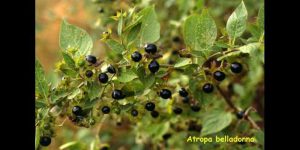 greatest service in inflammation of the kidneys with piercing burning pains in the lumbar region, returning periodically with increased severity. Aconite. Incipient stage of post scarlatinal nephritis, pain in lions, scanty urine without blood. Convallaria. Nephritis from heart disorders. It affords relief when there is extreme rapid and irregular action of the heart,and in general anasarca and ascites from mitral insufficiency. Apocynum. Palliative in dropsical conditions where the urine is scanty. Also useful for comma and convulsions in the nephritis of pregnancy.
greatest service in inflammation of the kidneys with piercing burning pains in the lumbar region, returning periodically with increased severity. Aconite. Incipient stage of post scarlatinal nephritis, pain in lions, scanty urine without blood. Convallaria. Nephritis from heart disorders. It affords relief when there is extreme rapid and irregular action of the heart,and in general anasarca and ascites from mitral insufficiency. Apocynum. Palliative in dropsical conditions where the urine is scanty. Also useful for comma and convulsions in the nephritis of pregnancy.




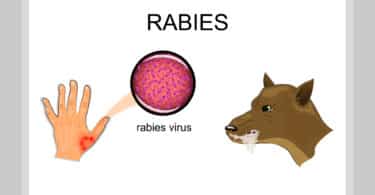

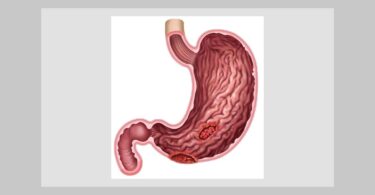
An important remedy seems to have been omitted here, namely Eel Serum (Serum anguillar ichthyotoxin. It is part of Boericke’s MM & Repertory, and I quote the following extract from the National Journal of Homoeopathy, India (from their website):
Acute (or subacute) nephritis from frigor (i.e. cold), infection, or intoxication with albumin or blood, ischuria, uraemia or even anuria; leading to renal failure or heart or liver involvement. Conversely too.
During heart disease sudden acute kidney involvement. Cardiac stage indicated by hypertension (and oliguria) but sans oedema (like Plb) and uremia.
Heart troubles, functional, secondary to renal mischief; like systolic insufficiency, decompensating valvular insufficiency, dyspnoea, oedema (or none); in particular with advanced nephropathies, oliguria (preparatory of renal failure) and not ruled out hepatomegaly.
i hope plb with cupr.ars. will redeem quit a persons alongwith glonine.
iam kidney patient on diaylasis since 15 yrs three times a week with nil urine creatnine 8.50 pre diaylaSIS UREA 140
My self sandeep Kumar. I am suffering from chronic kidney failure. I am having creatinine level 5.6 & blood urea 114. Still I am not in dialysis. Pls suggest if can be cured.
Brights disease dropsy albumen palpitate heart,Nitric Acid crave fat smelly urine feels urine is cold as it passes,pointed out by SM Gunavante.